Dr. Randall Hughes FSU Coastal & Marine Lab
Last week, David and I (along with all the students and technicians in our labs, and over 500 other ecologists/students) attended the Benthic Ecology Meeting in Mobile, AL. You may well wonder – what goes on at a meeting of ecologists? And what does “benthic” mean anyway?
The term “benthic” refers to the bottom of an ocean or other body of water, so benthic ecologists are those who study animals and plants that spend all or part of their time on or below the sediment surface. (As opposed to “pelagic” animals and plants, such as a lot of phytoplankton, that spend their time floating or swimming around in the water column.) That said, there’s no hard and fast rule regarding who can speak at the meeting or what organisms they can talk about – you don’t get kicked out if you talk about the open ocean!
The Benthic Ecology Meeting is an annual event that started 40 years ago with the goal of bringing together ecologists who study marine systems. It moves around from year to year to different universities or marine labs – this year, the meeting was hosted by the University of South Alabama and Dauphin Island Sea Lab. Originally, most of the people who attended were from the east coast of the U.S., but these days there are scientists from all over the U.S., and even a number of other countries. During the day, there are different sessions organized by research topic (e.g., “Salt marsh” or “Predator-prey interactions”), and presenters get 15 minutes to talk about their research (usually using pictures and graphs in Powerpoint) and answer questions from the audience. Then in the late afternoon, there is a poster session, where conference attendees can walk around a large exhibit room and look at large posters describing other research projects.
The meeting, like other conferences, is a great professional opportunity – you can talk to a diverse group of students and professors about your research, network for future collaborations and/or job opportunities, and find out about the latest and greatest research that is going on. Smaller meetings like this one (as opposed to the Ecological Society of America meeting that regularly involves thousands of participants) are particularly good opportunities for undergraduate and graduate students to get feedback on their research in a collegial and supportive environment.
But it’s also simply a lot of fun. You get to catch up with friends and collaborators, hear funny stories about the crazy antics of Dr. Venerable Esteemed Professor when he/she was getting started as an ecologist back in the day, and relax and socialize with a group of very entertaining and interesting folks. This year I was happy to finally meet John Carroll in person – John is a follower of our blog and fellow blogger himself!
There are social events in the evening – in fact, great pride is taken in who hosts the most fun events from year to year! The folks in Mobile know how to throw a party, as evidenced by the banquet on the final night of the conference – just look at those crawdads!
I have attended the Benthic Ecology meeting (almost) annually since I was a research technician at the UNC Institute of Marine Science, working with our current collaborator Jon Grabowski. Now that I am back in the Southeast, working on salt marshes and oyster reefs that are so prevalent in this region (as opposed to seagrass beds of northern California when I was a graduate student and postdoc), I find that the meeting is a particularly valuable opportunity to learn about what research is going on in these same systems at nearby institutions. For instance, this year I went to talks on grasshopper grazing in Juncus (a subject near and dear to my heart) and on how snails regulate their temperature in the marsh to avoid overheating. And of course, lots of talks about oysters! Plus I solicited opinions from other ecologists regarding our work. All in all a productive, and very fun, way to spend a few days!

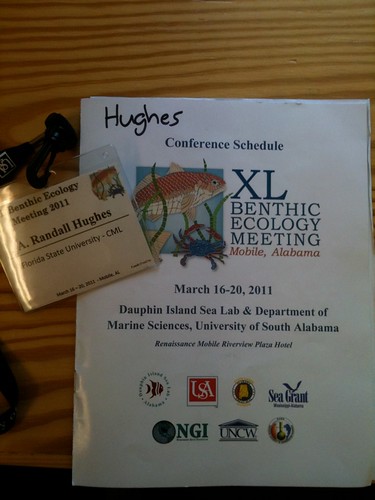
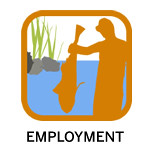
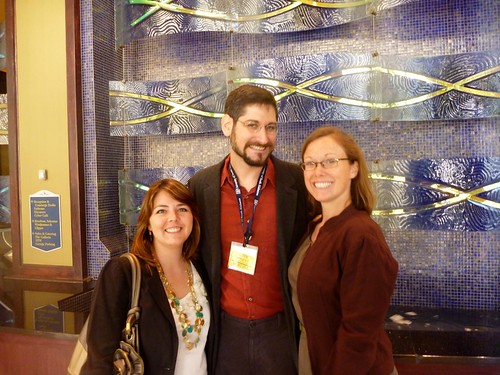
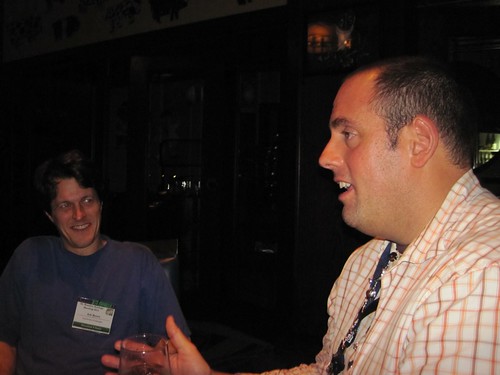
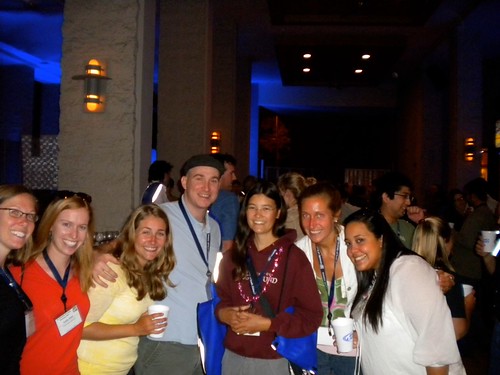
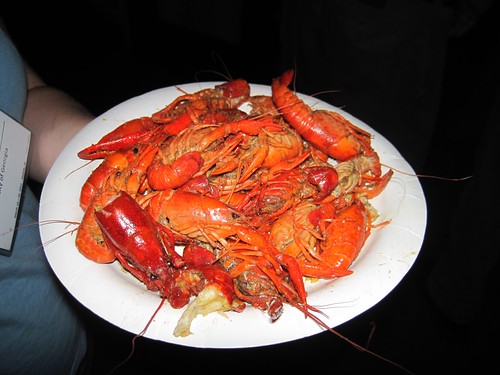
1 comment
Great explanation of what the ecology conference was all about and why it’s so much fun! And those crawdads looked pretty tasty. I’m movin’ back to the Gulf Coast….
Comments are closed.